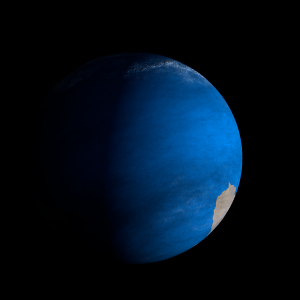|
|
Space Astro
|
Info for exoplanet "Onyonemyo He"
| Scientific (actual) data |
|---|
| Planet | TOI-451 d |
| Planet status | Confirmed |
| Radius | 0.3631 |
| Orbital period | 16.3649 |
| Semi major axis | 0.1255 |
| Orbit eccentricity | 0.057 |
| Inclination | 89.56 |
| Discovered | 2021 |
| Updated | 2022-03-30 |
| Omega | 170 |
| Tzero tr | 2458420 |
| Impact parameter | 0.23 |
| Temperature (kelvin) | 708 |
| Publication | Published in a refereed paper |
| Detection type | Primary Transit |
| Radius detection type | Primary Transit |
| Alternate names | Psc Eri d |
| Star name | TOI-451 |
| Right ascension | 62.97° |
| Declination | -37.94° |
| Mag v | 11 |
| Star distance | 123.74 |
| Star mass | 0.95 |
| Star radius | 0.879 |
| Star age | 0.125 |
| Star temperature | 5550 |
| Star alternate names | Psc Eri |
| Wikipedia article | TOI-451 d |
Back
| |
| Fictional info (?) |
|---|
| Suggested name | Onyonemyo He |
| Planet type | Terrestrial |
| This planet is named after the deity Onyonemyo He, the goddess of prosperity.
Onyonemyo He is gravitationally locked with TOI-451 in a 4:3 spin-orbit resonance, and rotates in a way that is unique in its solar system.
Two spacecraft have visited Onyonemyo He: Frontier 4 flew by 33 years ago; and Messenger, launched 13 years ago, orbited Onyonemyo He over 95 times in four years before exhausting its pwoer source and crashing into the planet's surface 11 years later.
Future astrobiology missions are planned, including the Onyonemyo He 2900 and ExoOnyonemyo He rovers.
A prominent result is the "great yellow spot", a giant storm that is known to have existed for centuries since it was first seen by telescope. |
| Atmosphere | Hydrogen peroxide | 68% |
| Xenon | 31% |
| Hydrogen | 0.15% |
| Argon | 0.048% |
| Carbonyl sulfide | 1.0E-6% |
| Neon | 0% |
| Atmospheric pressure | 25 bar |
 |
| No known satellites |
| Google search for Onyonemyo he |
|
Website by Joachim Michaelis
|
|
|
|